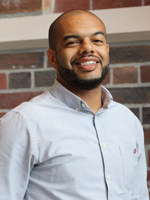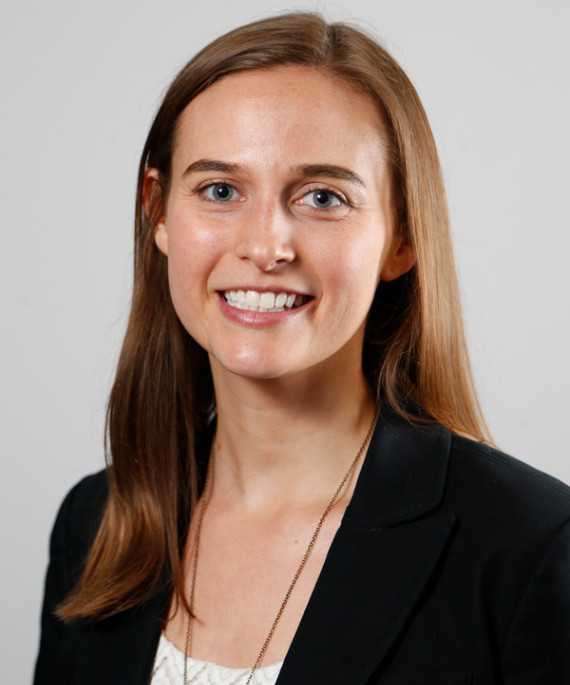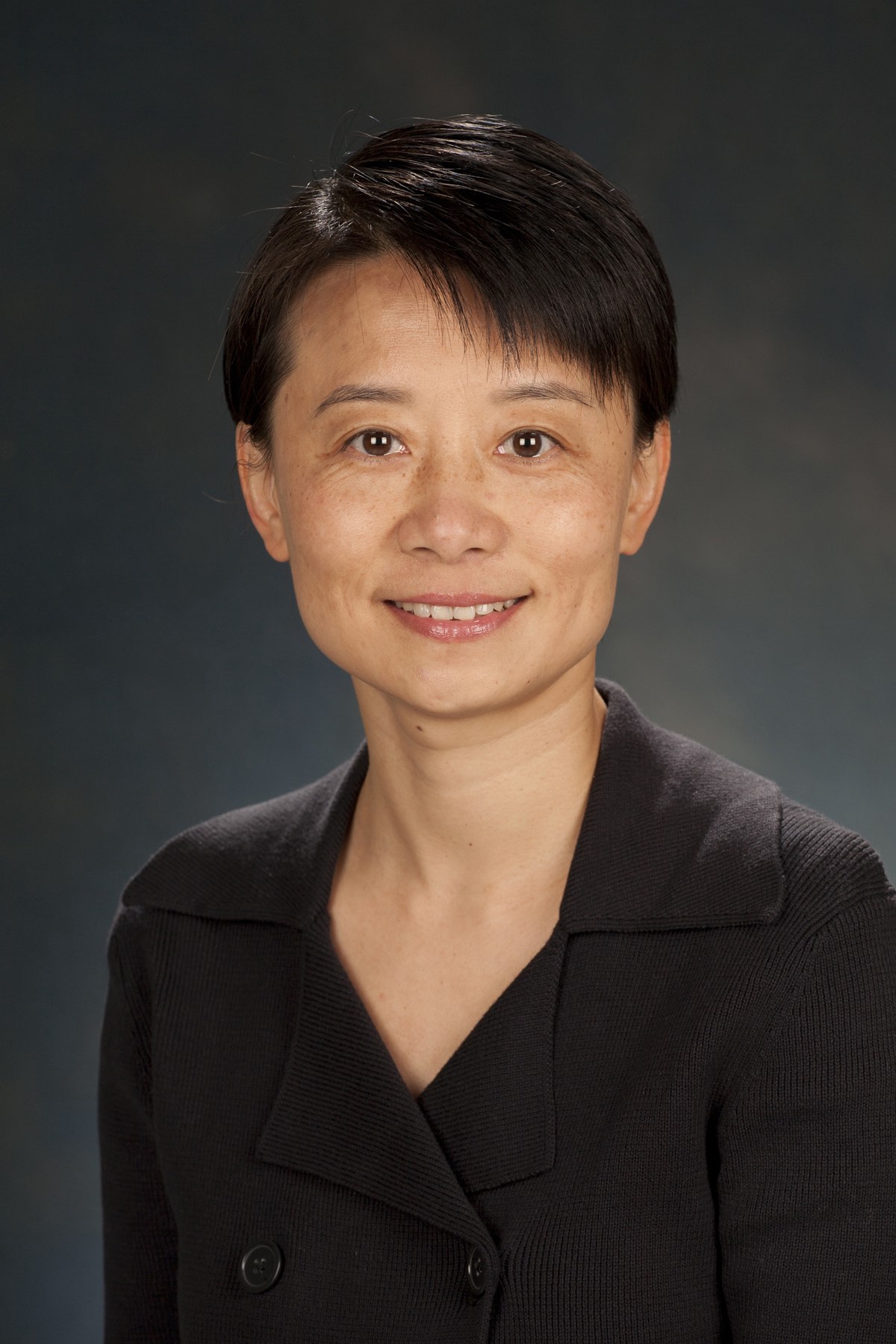
Researchers new to the world of research grants often find proposal writing complex. Steven Stone-Sabali was not alone in seeking support. The new assistant professor of school psychology turned to the college’s Office of Research, Innovation and Collaboration (ORIC) for services.

“As an early career researcher, a professional goal of mine was to develop my proficiencies in grant writing and understanding the funding process,” he said. “ORIC and its knowledgeable staff made that process easier at every step. This undoubtedly helped me secure my first grant with the National Institute on Drug Abuse that was worth about $230,000.”
Kimberly Lightle, director of research in the office, said they offer an array of services for researchers across the college, from faculty and staff to postdoctoral scholars and students.
“The goal is to help them effectively navigate the processes for submitting proposals through Ohio State to sponsors,” she said. “Once grants are awarded, we have staff dedicated to helping researchers follow the guidelines for managing those awards.”
In FY2023, 57 of the college’s principal investigators received $30.6 million in awards, an increase over the prior year of 50 percent. In total, all of the college’s principal investigators currently have $126 million for 104 in active research projects.
$30.6M
In External Grants
Awarded in FY2023
104
Total Active Research
Projects
$126M
Total Active Funded
Research Projects
57
New Grants Awarded
in FY2023
#1
In Active Research
Grants among Colleges
of Education in Ohio
#20
In Active Research
Grants among Public
Colleges of Education
in U.S.
#29
In Active Research
Grants among All
Colleges of Education
in U.S.
Many proposals address the college’s areas of research distinction and priority: early childhood, health and economic vitality, urban and rural education, STEAM education and global and local engagement.
Dean Don Pope-Davis has made maintaining the centralized office a priority. “Research is at the heart of all we do here at Ohio State,” he said. “Our mission is to make discoveries that improve lives and solve societal problems. To do that, we need the support of sponsors who understand and value the innovation, excellence and justice that we provide.”
Strategies to increase the quality of proposals
Creating a quality proposal is a key mission of the office. “From the novice to veteran proposal writer, we have a ‘smorgasbord’ of programs and resources that meet investigators where they are,” Lightle said.
She and Slesnick have years of experience writing grant proposals and winning significant funding. Both have participated in grant review panels for the National Institutes of Health, the National Science Foundation and other federal agencies. They tap their inside knowledge as they support researchers.
The office offers the following services:
Individual and monthly group grant-writing support
Slesnick and Lightle provide one-on-one feedback to principal investigators on their proposals. They help hone the narrative to bring out its strengths.
Slesnick and Lightle also lead a standing monthly meeting. Attendees provide each other with feedback. Valuable insights are shared.
“I remember attending grant writing meetups,” Stone-Sabali said, “where researchers used a shared space to draft their grant proposals, bounce ideas off each other and receive guidance from successful grant writers. It was a stimulating intellectual space and informal, so you didn’t feel pressure to ‘have it all figured out.’ This is especially helpful for early career researchers who are still finding their footing.”
Red Team reviews
This is an intensive focus on improving proposal quality. Reviews have the same magnitude as formal panel reviews. Reviewers are recruited from within the college, the university and across the country.
“The principal investigator provides names for these reviews, and I ask if they will participate,” said Lightle. “Zoom makes it easy.”
At least three weeks before the submission deadline, a formal meeting is convened with the reviewers and the principal investigator. The feedback shapes the subsequent submission.

Rebecca Dore, director of research for the college’s Crane Center for Early Childhood Research and Policy, went through the Red Team review process multiple times with her proposal on media and language development.
“Every time, I felt that my proposal was exponentially better because of the feedback,” she said. “For example, reviewers helped me think about how I could incorporate language to indicate openness to cultural difference in how families use media based on diversity of racial/ethnic background, socioeconomic status and family structure.”
Dore received a four-year, $650,000 grant for her project, “Characteristics of media use and linguistic trajectories during early childhood,” from the National Science Foundation.
External expert review
The office pays an honorarium for external expert review of proposals that received either high scores from federal agencies (e.g., NIH R01, NSF, IES, USDA/AFRI) or an invitation to submit to a prestigious foundation (e.g., Spencer, WT Grant, Kellogg, Gates) in response to a letter of intent.

Xin Feng, professor of human development and family science, used this service to prepare the second submission of an R01 proposal to the National Institutes of Health.
“My collaborators and I decided to submit to a different study section and thought that the proposal would benefit from the external review,” she said.
“The reviewer, who has expertise in both the content area and methodology, provided insightful comments and helpful suggestions to increase the clarity of writing, improve the presentation of preliminary data and enhance the impact of the proposed research.”
“We submitted this grant application in June 2023, and it will be reviewed in October,” she said.
DC Days
This service encourages researchers to become more competitive grant writers by providing a two-day group visit with federal program officers in Washington, DC. Individual appointments are also arranged throughout the visit.
The purpose is to:
- Determine if the researcher’s basic concept is a good fit with a sponsor’s mission
- Seek advice about project design and appropriate funding track
- Better understand the peer review process
Earlier this year, 13 of the college’s assistant professors and postdoctoral scholars went on the trip.
In the follow-up survey, one participant said they benefited from meeting program officers in person and talking to proposal reviewers. “It makes reaching out to them for questions seem like I'll … receive feedback from someone who has my best interest in mind,” they said.
Augmenting proposal methodology
Pope-Davis supports two college centers focused on building capacity in research methods. This support ensures that projects propose cutting-edge, most relevant data collection, analysis and reporting.
The QualLab and the Quantitative Methodology Center provide free consultation to all researchers in the college. In addition, both units provide free workshops on the use of a variety of software and statistical analyses.
They also support invited speakers from across the nation to discuss innovative and important methods and analyses. This includes institutes, one presented by each center on alternating years.
Creating pilot data: The backbone of robust proposals
Dean’s Big Idea Seed Grant Program
The funding level for this program is larger than a traditional seed grant. Applicants receive two years of funding to address a well-defined social, educational or health problem or disparity with the goal of identifying solutions by fostering innovation.
$500k
Total value
With a well-launched project, awardees are primed to sustain their work by leveraging support from other funding sources.
Xin Feng, who used the external expert review service, received a Big Idea Seed Grant in 2020. That project, “Children’s Biobehavioral Regulation of Emotion in Naturalistic Environment and the Effect of Maternal Depression,” served as the basis for her recent submission to the National Institutes of Health.
Dean’s Emerging Scholars Seed Grant Program
This seed grant program provides support to collect preliminary data for a larger application to external funders. Interdisciplinary collaborations are encouraged.
$280K
internal grants awarded
$4.55M
external grants received
“In the past, over five years, our college disbursed a total of $280K to our researchers in seed grants,” said Slesnick. “The result was $4.55 million in external grant awards. This is a 16-times return on investment, which makes seed grants well worth making.”
Pope-Davis summed up the emphasis placed on best practices. “We continue to build the infrastructure to support our faculty,” he said, “so they can continue to be successful with their research efforts.”




